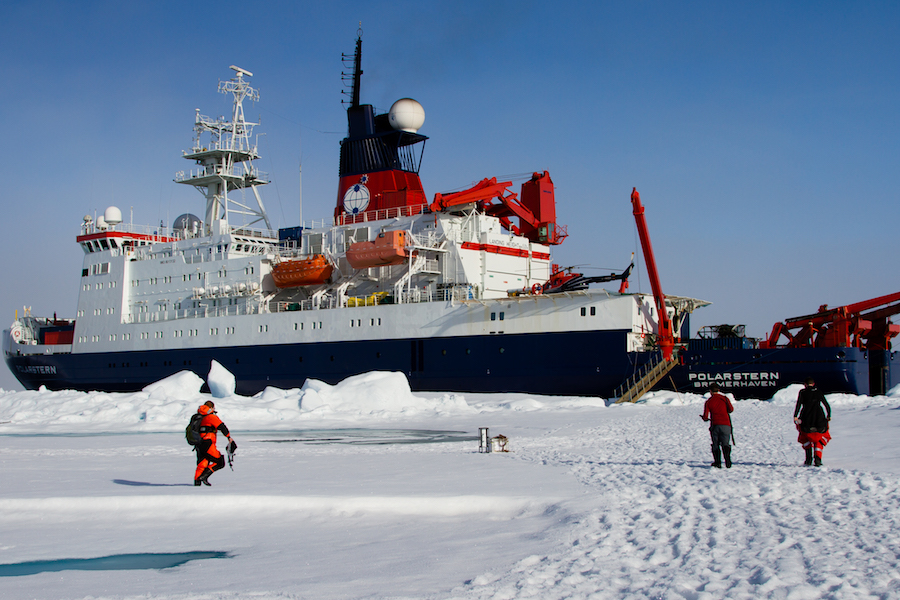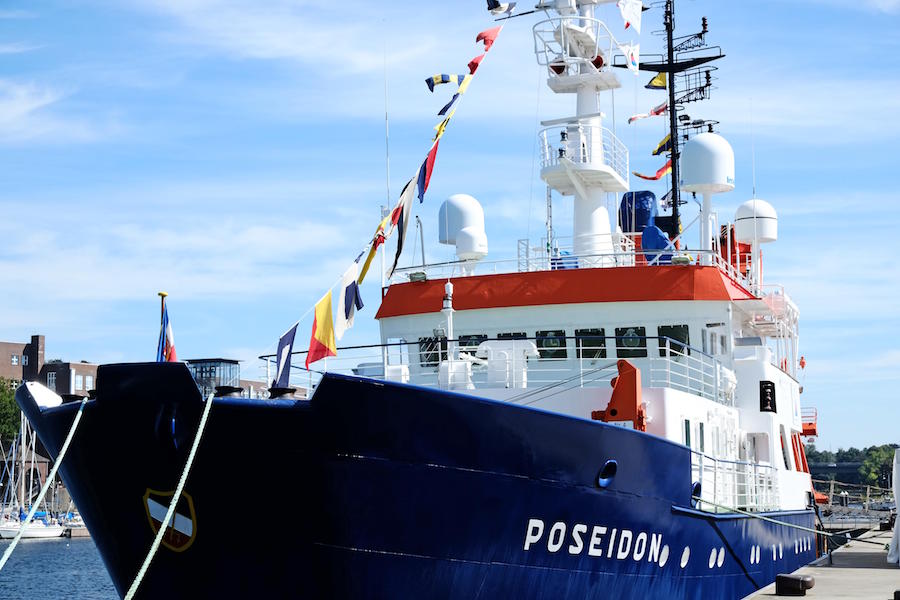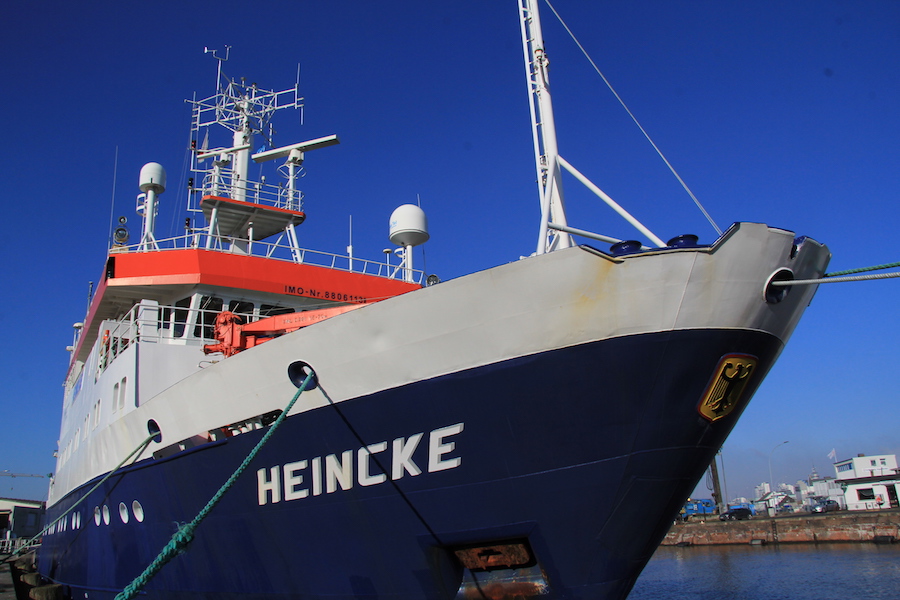German research vessels
Germany currently has 17 research vessels in service. Various different organizations are involved in planning the missions as the ships are deployed in the service of science around the globe, all year round.
The German research fleet can be divided into various categories: There are large, medium-sized and small ships as well as fisheries research vessels. In addition to the Federal Ministry of Education and Research (BMBF), the Federal Ministry of Food and Agriculture (BMELV), the Federal Ministry of Transport and Digital Infrastructure (BMVI) and the Federal Ministry of Defence (BMVg) also have one or more research and measurement vessels. They all explore various parts of the world’s oceans for their resources, their living organisms and the impact of climate change. The vessels launch robots, drilling rigs, and other devices for collecting data under water. These are used, among other things, to gather valuable information on biological and geological processes in the seas and oceans. However, only two of the ships, the POLARSTERN and the MARIA S. MERIAN, are capable of navigating through ice. These ships are designed to cope with the extreme conditions of the Arctic and Antarctic Oceans.
To the Arctic by icebreaker
Germany's largest research vessel, which measures 118 metres long, is the POLARSTERN. Launched in 1982, it frequently sails to the Arctic and Antarctic and is designed to operate in temperatures as low as –50°C.

The POLARSTERN is one of the most capable research ships in the world. What makes it so special is that it is also an icebreaker. Navigating through ice measuring up to one and a half metres thick is an easy task, and if it cannot make it through thicker floes, it rams the ice until it can. This is how the POLARSTERN makes its way through the ice so that it can serve various research purposes including the study of climate change, weather and temperature trends, the living organisms above and below the surface, the receding ice caps and the spread of plastic waste and much more.
Normally, the POLARSTERN, which can accommodate 50 scientists, is to be found in the Arctic when it is summer in the northern hemisphere and in the Antarctic when it is summer there. In 2019, however, the POLARSTERN will also be spending the northern winter in the Arctic. As part of the MOSAiC (Multidisciplinary drifting Observatory for the Study of Arctic Climate) project which starts in September 2019, it will deliberately let itself become trapped in the ice as it freezes. The plan is that it will drift across the Arctic together with the ice in which it is trapped. This is important because little data is available to date from the coldest parts of the year. The scientists involved in the MOSAiC project from 17 countries intend to fill in the gaps and gain knew insights, for example on the Arctic Ocean’s CO2 emissions and the transfer of heat between the ice, water and the atmosphere.
The research icebreaker POLARSTERN has travelled 1,719,943 nautical miles, or 3,185,334 kilometres, between 1982 and 2018. That’s equivalent to going around the world 79 times following the line of the equator. The Federal Government is currently planning a successor to the current POLARSTERN so that Germany can remain a dependable partner in international research and relevant cutting-edge research.
Maria Sibylla Merian – from naturalist to inspiration
Like the POLARSTERN, the MARIA S. MERIAN is also an icebreaker but as a smaller, medium-sized, research vessel, it can only break through ice up to a thickness of 60 centimetres. For this reason, it is normally used at the margins of the ice. Built in 2006, it is particularly environmentally friendly for a ship of its size measuring almost 95 metres long.
The MARIA S. MERIAN has two propellers and a stabilization system which enable it to precisely maintain its position when it is exploring the ocean floor, even in high seas. A research vessel in the tradition of its namesake: Born in 1647, Maria Sibylla Merian was one of the first women to undertake major research journeys on her own, to make close observations of insects and to gather many new facts about their life-cycles (the metamorphosis of butterflies, for example).
POSEIDON

There are other research vessels which carry out expeditions in Arctic waters. However, they do so where the course is navigable due to an absence of ice and in summer when the ice sheet recedes. One of these vessels is the POSEIDON, which is another mid-sized research ship. This is the second German research vessel named after the Greek god of the sea. The original ship was used from 1902 to 1945 and entirely devoted to fisheries research. Its successor – built in 1976 – is deployed in the North Atlantic as well as the Mediterranean with more of a focus on oceanographic, marine-biological and geological research. With its cranes, echo sounders, winches and five laboratories, it is ideally suited for scientific measurements, for example of the water depth, and with its low working deck it can quickly launch the JAGO submersible to explore the seabed.
In summer as far north as Spitsbergen and Greenland
At times the medium-sized HEINCKE and the fisheries research vessel WALTHER HERWIG III also make it as far as the Arctic Ocean during summer temperatures. The HEINCKE, which was launched in 1990, is usually deployed in the North Sea and the North Atlantic as far north as the Spitsbergen archipelago (Svalbard).

The vessel, which is used mainly for biological and geoscientific projects, has four laboratories for examining samples as well as cranes and winches to lower and lift equipment into and out of the water. Scientists aboard the WALTHER HERWIG III concentrate on studying fauna. It is Germany’s largest fisheries research ship. The 65-metre vessel can cast large nets and fishing gear into the sea for the purposes of monitoring fish stocks, fish diseases and the effects of pollution.
The WALTHER HERWIG III is to be retired from service in 2020 to make way for a new fisheries research vessel. Its up-to-date replacement will focus mainly on the sustainable use of ocean resources and the protection of the sensitive ecosystem.